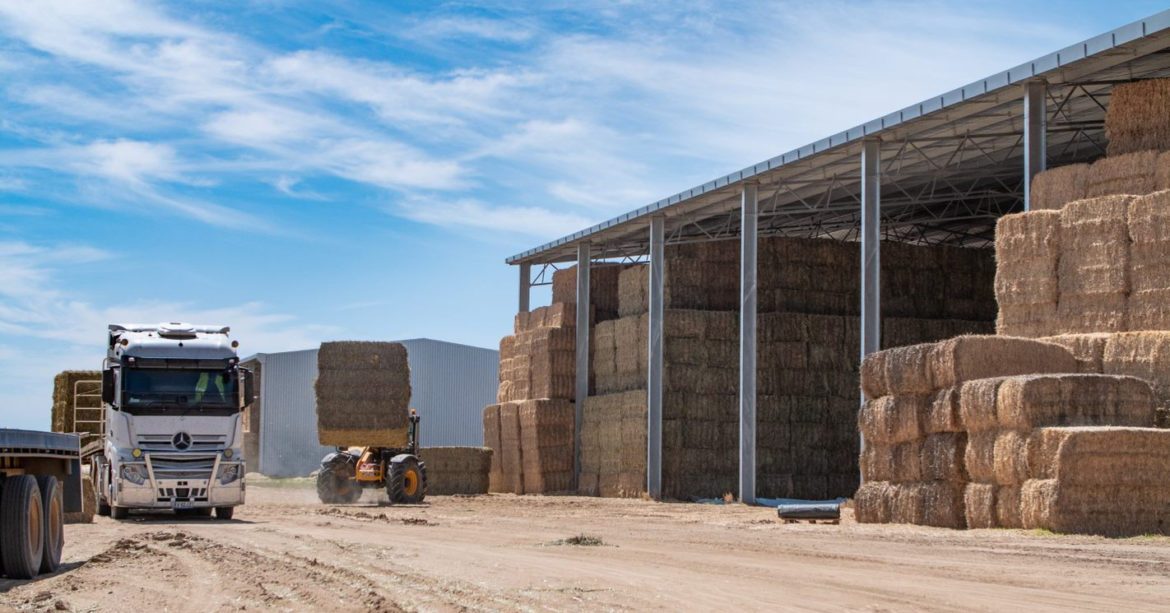Printing parts for farmers, right on your doorstep
- On : September 9, 2021
- By : Entegra Signature Structures
Metal machinery parts could soon be manufactured fast and close to home, eliminating logistical, supply and downtime risks for Australian hay producers.
This comes as the value of Australian-made infrastructure and materials has never been more important for national agricultural industry.
World-leading 3D metal printing technology was on-show as part of the Australian Fodder Industry Association (AFIA) online Fodder Forum last night.
Sponsored by Entegra, the forum heard from Steven Camilleri, one of the founders of SPEE3D a metal 3D printing technology business, who said this production was the “fastest way possible” to manufacture parts.
Key points
- AFIA webinar featured metal printing technology that can produce 6kg parts in an hour
- Entegra’s Dan Duggan presented a case study on hay shed pay back periods
- Infrastructure was shown to be key for hay businesses maximising returns
SPEE3DCraft 3D Printing Simulator Release Trailer
Steven told the crowd of hay growers and industry representatives that the Australian technology could accelerate metal powders to “supersonic speeds”, producing parts at 6kg an hour.
The technology has been trialled with the Australian army in the Northern Territory desert, but Steven explained there was huge scope for this in the farming sector.
“We were printing for weeks at a time in the desert…. we designed the parts, print and machine and implement them all out in the desert,” he said.
“We trained the army guys to be able to run (the machine) really well in the field.”
Like Australian army officers, Steven said farmers operate “large, complex, and essential infrastructure, that must be kept and maintained against a tough environment”.
“They have complex bits of equipment, and both can be made overseas, and we are dealing with a fragile and disrupted global supply chain for equipment produced overseas,” he said.
Setting-up to print parts could be a “bit of insurance” to guarantee access in “minimal time”, according to Steven.
He said the 3D printing machine could also produce obsolete or customise parts.
“If you make your own part, you can take the feature from the existing part and change it to make it better,” Steven explained. “You can make a part just as good as the original, but it’s enhanced by our experience with what goes wrong with this part.”
Examples of 3D printed parts shared at the Fodder Forum included an aluminium camlock fitting, weighing 660 grams which was made in 24 minutes and cost $US66 (about $90). An aluminium bilge pump, weighing 8.3kg which took 83 minutes to print and cost $US415 (about $563).
The SPEE3D 3D printing machines are built in Dandenong Victoria and make aluminium, bronze and stainless-steel parts or tools manufactured through metal casting.
Steven told the Fodder Forum he’d be happy to work with farmers who wanted to lease machines.
AFIA chair Brad Griffiths said this technology was crucial to Australia’s modern agricultural industry.
“If we look down the list (of forum participants) everyone has had issues with getting parts in the past,” he said.
“This could potentially play a huge part in the agriculture sector going forward.”
Continuing the theme of Australian made infrastructure and on-farm cost savings, Entegra Design Consultant Daniel Duggan told the crowd how hay sheds delivered value back to the farmgate.
Harvest video
He said a study commissioned by Entegra demonstrated that adding infrastructure to a hay business maximised returns and minimised risk, something that was vital for the industry to consider now given the “genuine lack of tin to put hay under”.
Based on the 2020 season, the Entegra hay shed case study demonstrated that growers who were able to capture the quality of their hay, achieved a premium of up to $140 a tonne compared to quality downgraded hay at harvest.
With just this premium, the payback period in the 2020 season for increased storage ranged from less than 1 year to up to 2 years depending on the size and capital outlay for the shed.

